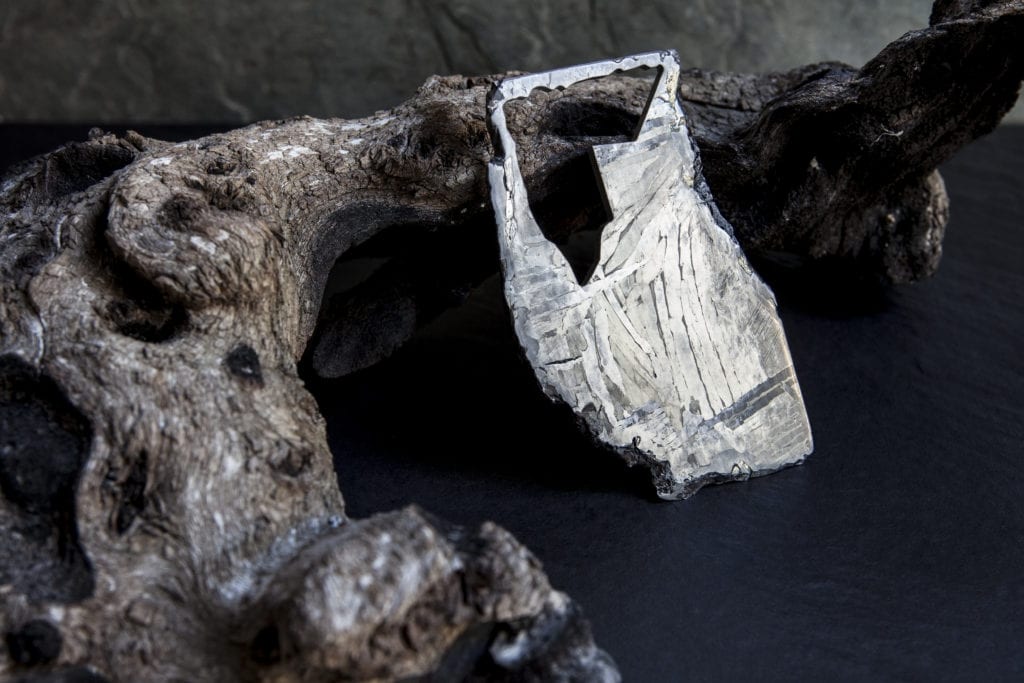Meteorites are fragments of asteroids, which reach the surface of a planet without completely disintegrating. Being these asteroids the surplus of the formation of the Solar System that began four thousand six hundred million years ago when a great cloud of gas and dust collapsed. Most of the material fell to the center of the cloud and formed the Sun. Some dust condensed in the cloud became planets; the objects that are in the asteroid belt never had the chance of being incorporated into them.
Only 5.8% of the meteorites fallen on Earth are metallic, composed mainly of iron and nickel and minimal amounts of other metals such as Ga, Ge, Ir…
Today we see iron as a vulgar material for practical use. However, in various cultures and, especially for the ancient Egyptians, it was a rare and beautiful material, which, having fallen from the sky, it was easy to attribute to it sacred connotations. In 2013, an international team of researchers has confirmed the extraterrestrial origin of iron used to make necklaces from beads 5,000 years ago. It consists of nine cylinders made from iron from meteorites, arranged in bead necklaces, alternating with gold and precious stones such as carnelian, agate or lapis lazuli. The beads were found in 1911 in two burials near Al-Gerzeh, north of Egypt, and are kept in London, in the Petrie Museum of Egyptian Archeology at University College London. They are the oldest pieces of iron jewelry known nowadays.
Rites of Passage uses metallic meteorites, which generally come from large asteroids. In particular, we use mostly the Seymchan, Sikhote-Alin and Gibeon meteorites. The name of each of them is due to the place of their fall: the first two in Russia and the third in Namibia.
The meteorite of your jewel can be a Seymchan or a Gibeon) , very stable and both present a unique and beautiful pattern called Widmanstätten structures, resulting from the inter growth of taenite and camazite bands (two iron and nickel alloys) , produced by a very slow cooling during a prolonged period. We obtain the pattern by carefully treating the meteorite through a complex process to bring it to light and make it visible; only afterwards it is placed on the gold and precious stones are eventually added.
Some creations have been made with Sikhote-Alin , a meteorite of extreme beauty because of its peculiar regmaglypts : prints similar to the thumbprints that are formed by the ablation of surface material when a meteorite passes through the Earth’s atmosphere; they are probably formed by hot gas vortices.
The iron can get to produce oxide on the surface of its meteorite jewel. If this happens, please remove it by rubbing with a clean white cotton cloth. The best way to avoid its appearance is to use it regularly and keep it away from moisture. If it comes in contact with running water or salty water, please clean it with distilled water and dry it immediately with a cotton cloth and then with a hair dryer for 5 minutes. It will be enough. In case of any eventuality like this one, please contact us and we will be happy to help you.
To avoid the likelyhood of any type of allergy to nickel present in the meteorites, Rites of Passage has implemented an insulation system consisting of an 18-carat gold structure and glass that separates the meteorite from the skin in the contact area.
Enjoy your particular piece of the old extraterrestrial origin of the universe !




